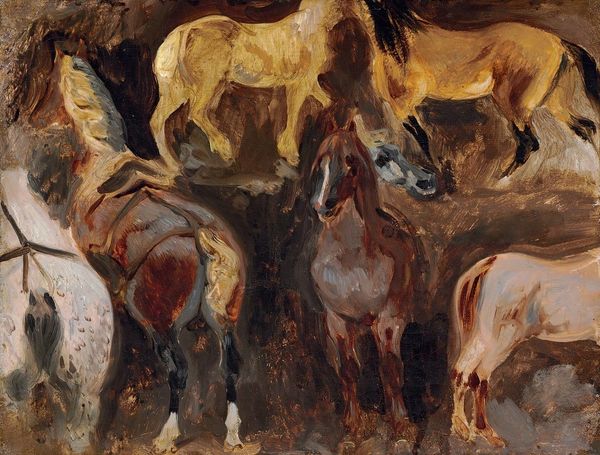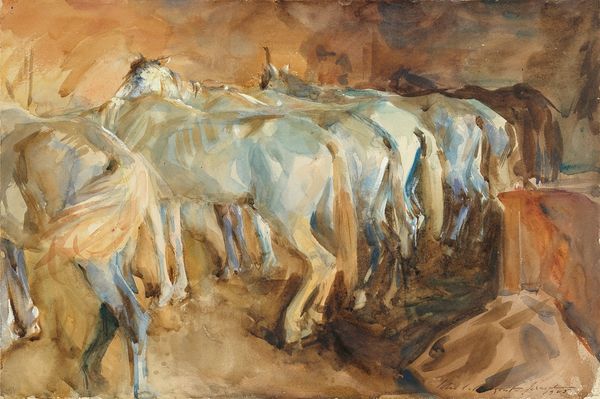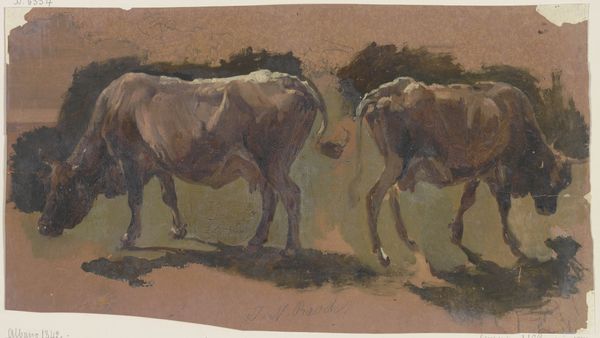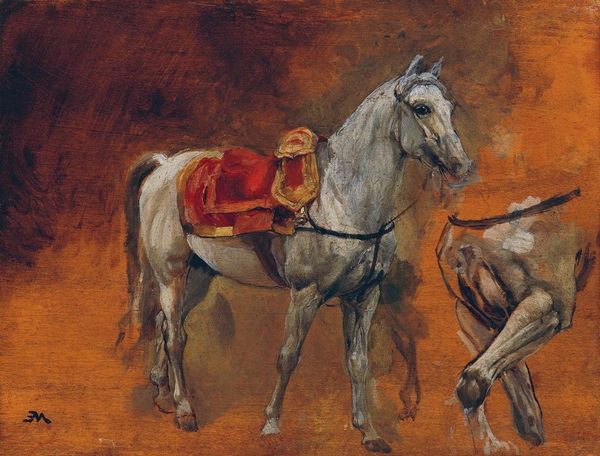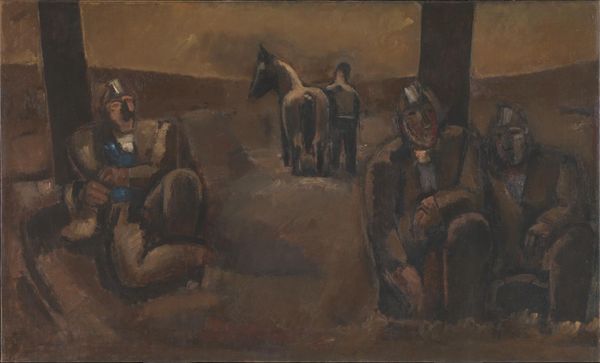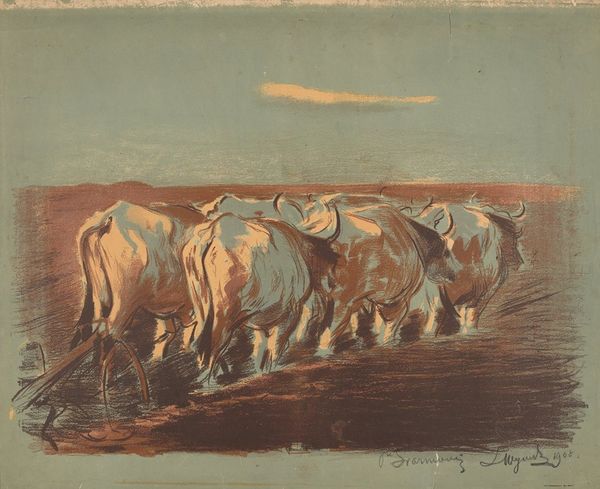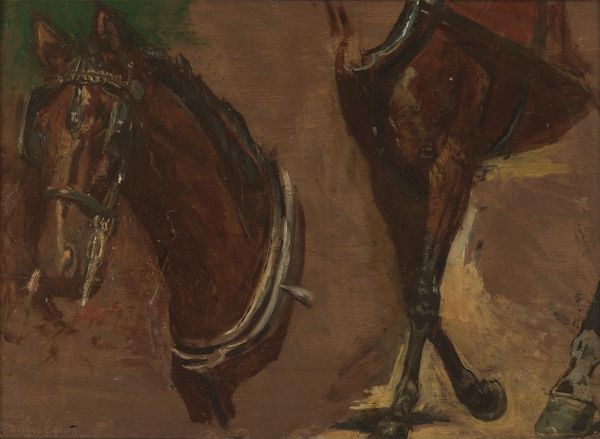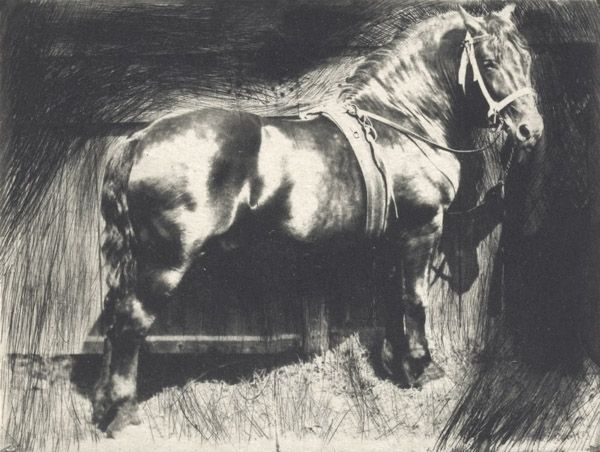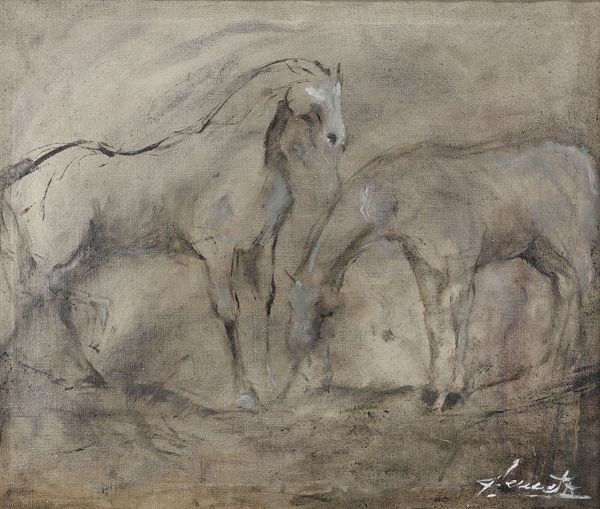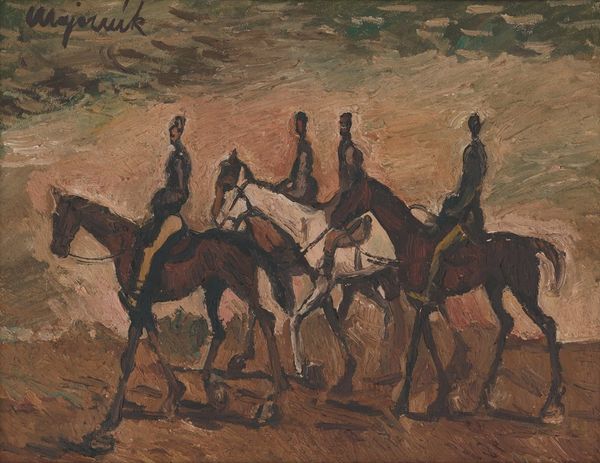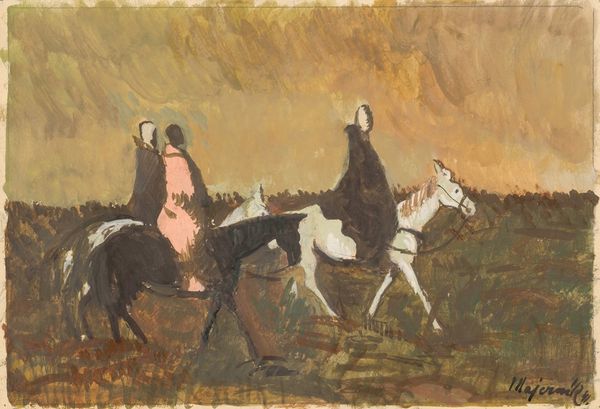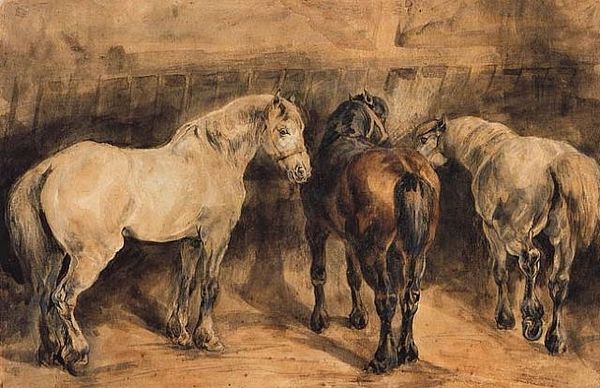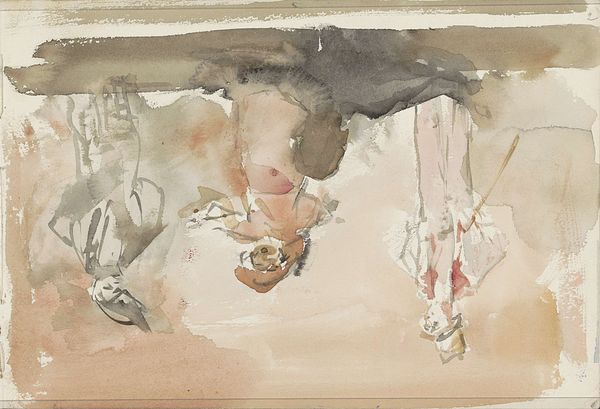
watercolor
#
landscape
#
watercolor
#
genre-painting
#
watercolor
#
realism
Dimensions: height 81 mm, width 159 mm
Copyright: Rijks Museum: Open Domain
Curator: Joseph Zephyris Gengembre created this watercolor painting titled "Rustende paarden op stal," which translates to "Resting Horses in a Stable," sometime between 1839 and 1870. It resides here at the Rijksmuseum. Editor: What strikes me first is the utter banality of the scene—or rather, the subversion of the picturesque. The artist chose to portray the horses solely from the rear! It's almost comical, yet incredibly compelling. Curator: The composition indeed presents a rather unusual perspective, challenging conventional notions of equestrian art. Instead of heroic profiles, we are presented with an almost abstract arrangement of equine forms. The strategic use of watercolor washes creates a beautiful tonal range, almost monochromatic, drawing our eye across the flat surface, highlighting textures over forms. Editor: The application of the paint shows an evident directness and ease. We get a sense of Gengembre's quick hand, documenting his reality with what appears to be efficiency. I imagine a utilitarian approach here: the artist working almost as a documentarian of rural labor and agricultural practices, not glorifying but depicting the mundane realities of working animals. Curator: I understand that take. But consider how he articulates the geometry within each horse: the lines are meticulously applied to distinguish subtle musculature. It shows an intense engagement with classical structure; look closely, and it becomes clear these seemingly ordinary horses take on symbolic, if subdued, weight. Editor: Symbolism perhaps hidden in the everyday experience! But what of the labor involved in creating this image? Preparing the watercolor pigments, sourcing the paper, even maintaining the stables to provide a consistent subject matter... These aspects are all part of the complete artistic creation. Curator: Yes, that process cannot be ignored, even within such restrained forms. However, within the frame, we must consider how these elements generate a unified viewing experience. We get to observe balance and asymmetry with these masses to discover its greater aesthetic language. Editor: So much context shapes our appreciation of this quiet, honest work, where the act of observation itself becomes a form of participation with labor. Curator: The painting reveals complex systems within even its most outwardly simplistic configurations.
Comments
No comments
Be the first to comment and join the conversation on the ultimate creative platform.
